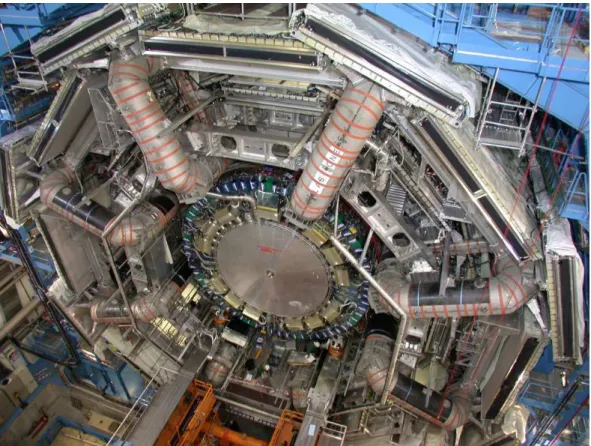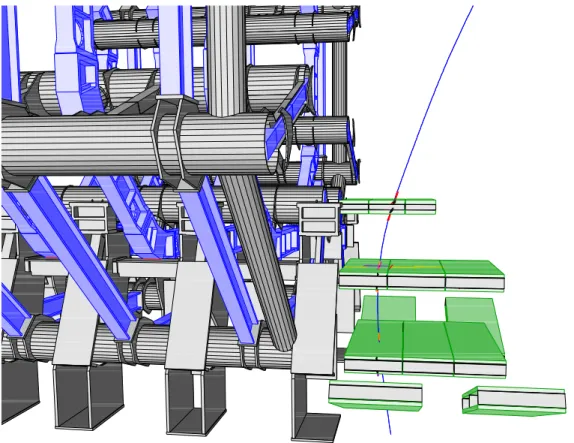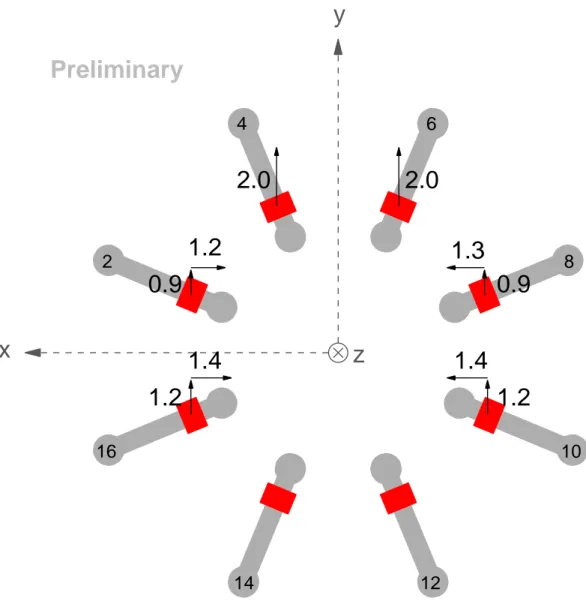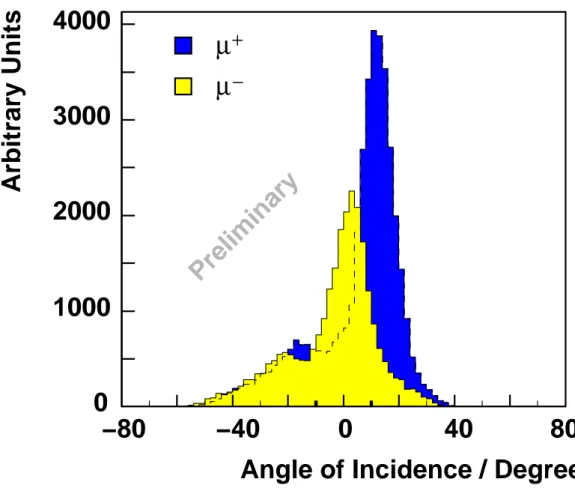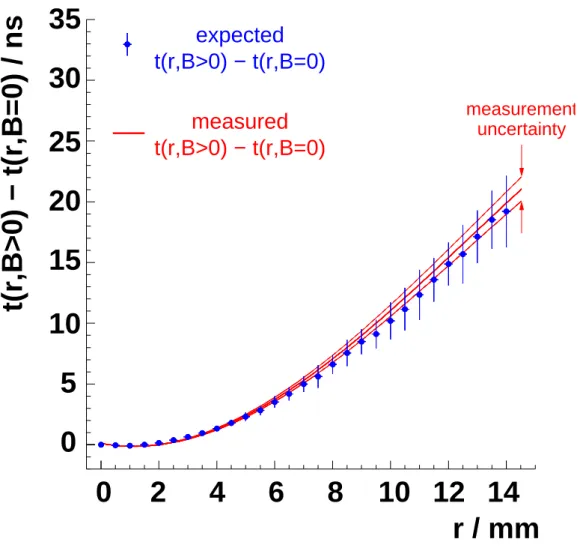First experience with the ATLAS Muon Spectrometer
J¨org Dubbert on behalf of the ATLAS Muon Collaboration
Max-Planck-Institut f¨ ur Physik, M¨ unchen, Germany
Abstract
The ATLAS experiment at the Large Hadron Collider (LHC) at CERN is cur- rently being assembled to be ready to take first data in fall 2007. Its muon spec- trometer is designed to achieve a momentum resolution of better than 10% up to transverse muon momenta of 1 TeV. The spectrometer consists of one barrel and two endcap superconducting air-core toroid magnets instrumented with three layers of precision drift chambers as tracking detectors and a dedicated trigger system. We report on our experience with the commissioning and installation of the precision and trigger chambers. First results of the cosmic ray test of the barrel muon spec- trometer with magnetic field are presented, including results of the calibration of the drift chambers and of the spectrometer alignment.
1 Introduction
The ATLAS muon spectrometer (see fig. 1) consist of three superconducting air-core toroid magnets instrumented with 1194 precision drift chambers—
Monitored Drift Tube (MDT) chambers, complemented Cathode Strip Cham- bers (CSCs) in the extreme forward region—and 2264 trigger chambers—
Resistive Plate Chambers (RPCs) in the barrel and Thin Gap Chambers (TGCs) in the endcaps [1]. The chambers are arranged in three layers which cover an active area of more than 5500 m 2 up to pseudo-rapidity values of
|η| < 2.7 (trigger chamber coverage extends to |η| < 2.4). Individual chamber sizes vary from 1 m 2 to 11 m 2 . The magnets provide an average field integral of 3 Tm in the barrel and 5 Tm in the endcap region, with a typical path length of 7 m.
The muon spectrometer has been designed for stand-alone operation with a
momentum resolution of 2–3% for transverse momenta below 200 GeV and
better than 10% up to 1 TeV. To achieve the desired momentum resolution,
Fig. 1. Photograph of the ATLAS detector in February 2007. Visible are the 8 coils of the barrel toroid magnet with 16 sectors of muon chambers installed on them and with the endcap calorimeter inside.
the precision chambers must reconstruct track points with an accuracy of bet- ter than 50 µm, including uncertainties from the misalignment of chambers at distances of 5–13 m. A system of more than 12000 optical sensors continu- ously monitors the deformations of the precision chambers and their relative positions within each layer and from layer to layer and connects them to a ref- erence frame on the toroid coils. The data are used for alignment corrections in the reconstruction with an accuracy of 30 µm in the bending plane.
2 Integration and Installation of the Muon Chambers
Upon their arrival at CERN, all precision and trigger chambers were sub- jected to a extensive test programme, including gas tightness, high voltage stability, and noise tests, to discover any damage which might have occurred during transport and to guarantee the required performance in the experi- ment. These tests supplement the quality control that already took place at the chamber production sites. Alignment and B-field sensors were mounted and tested at CERN, as well as photogrammetric targets for optical surveys.
The barrel toroid magnet has been completed in the ATLAS cavern in Octo-
Type Channel Dead Perc.
Channel / %
B MDT 184944 123 0.07
B RPC 373344 1726 0.46
EC MDT BW1A+C 147072 61 0.04
EC TGC BW1C 30000 5 0.02
